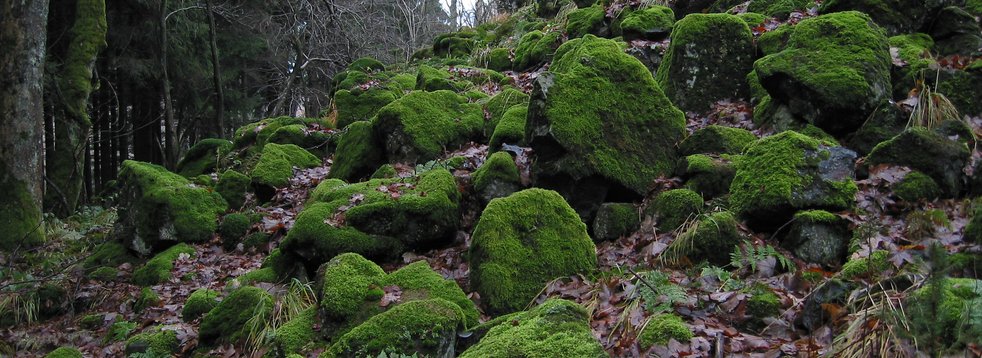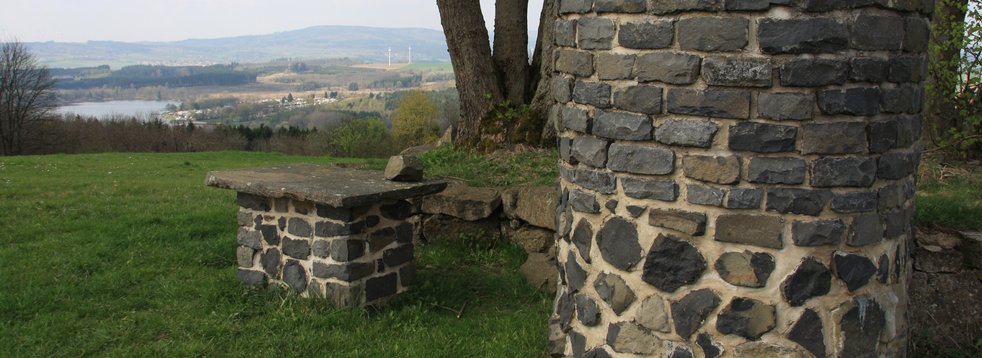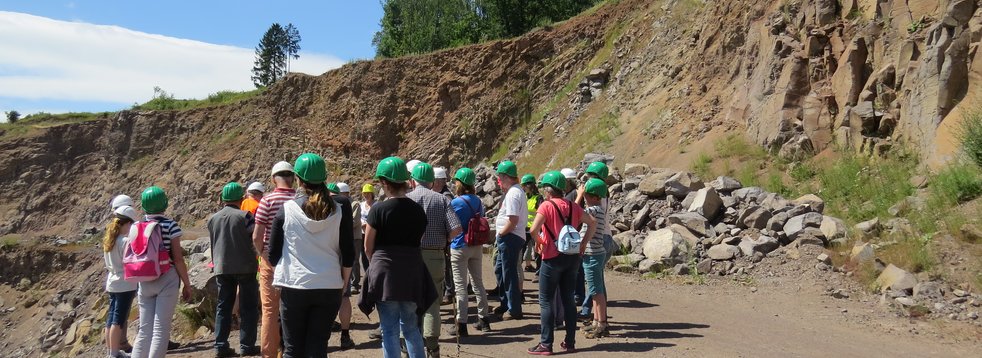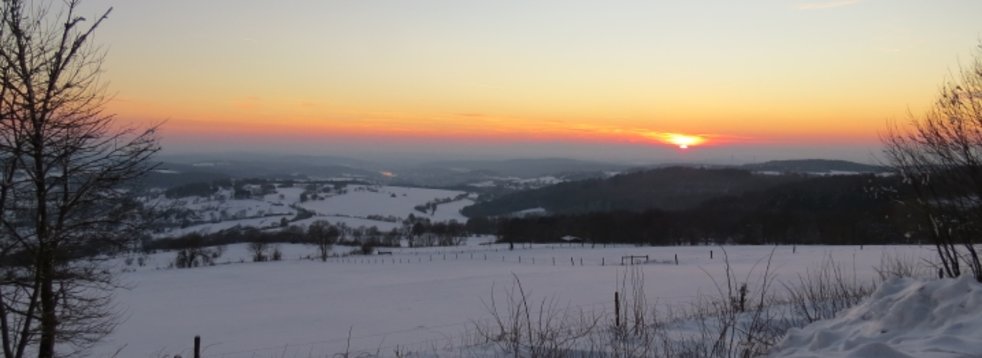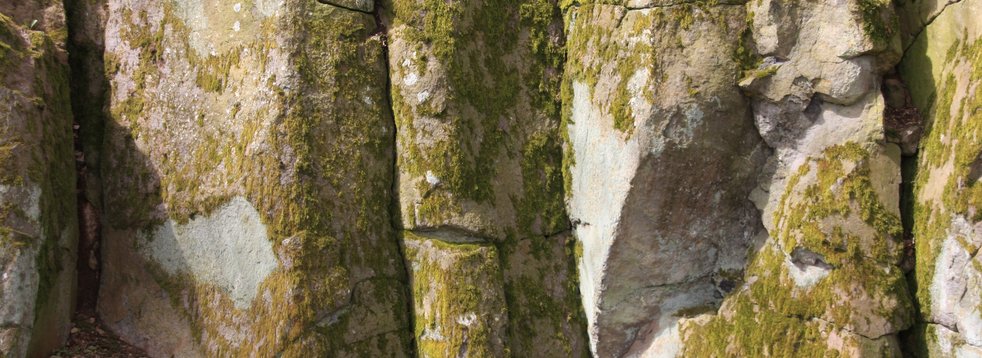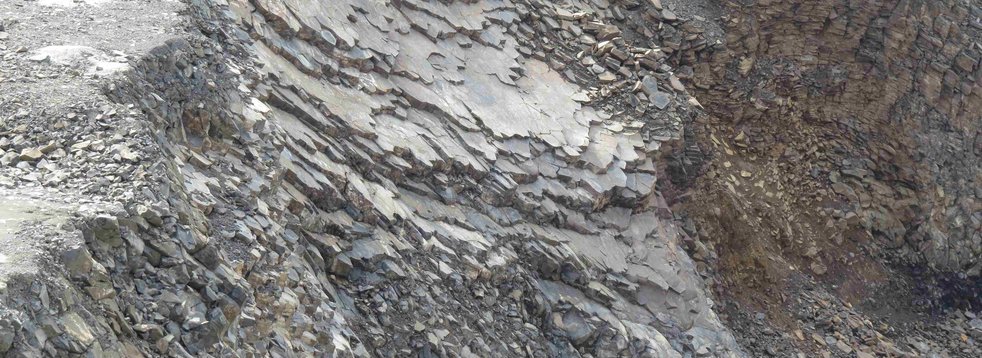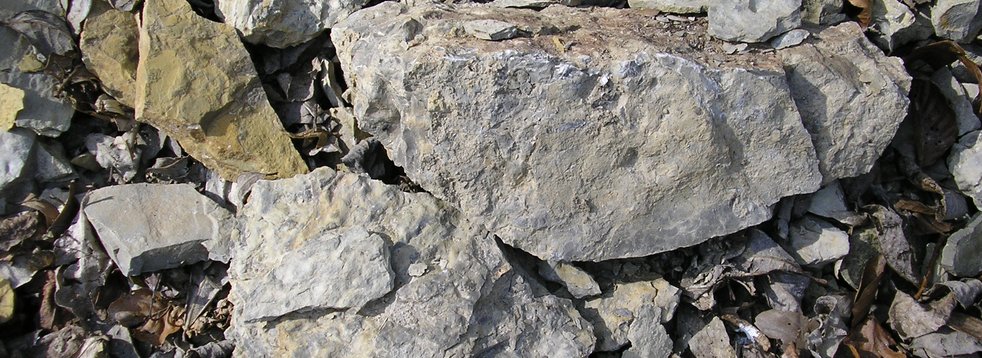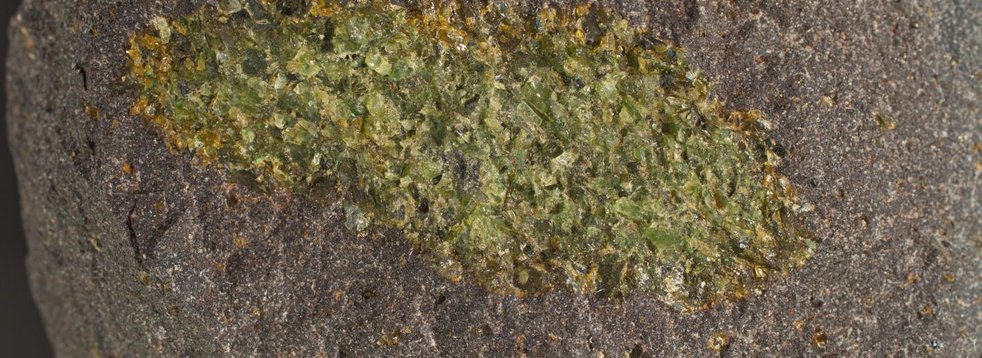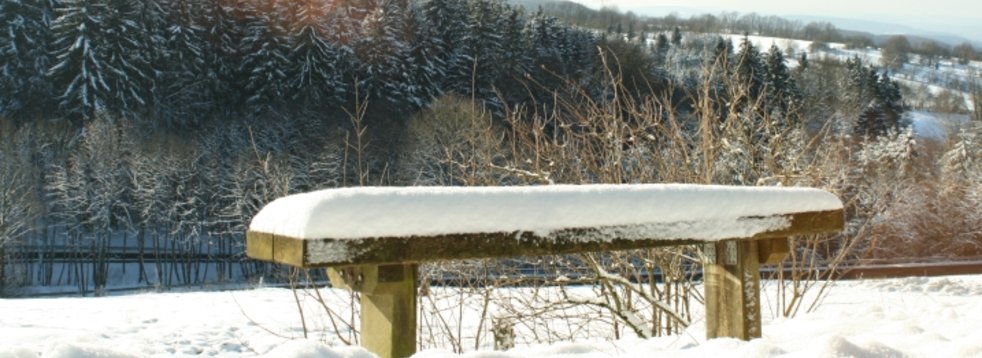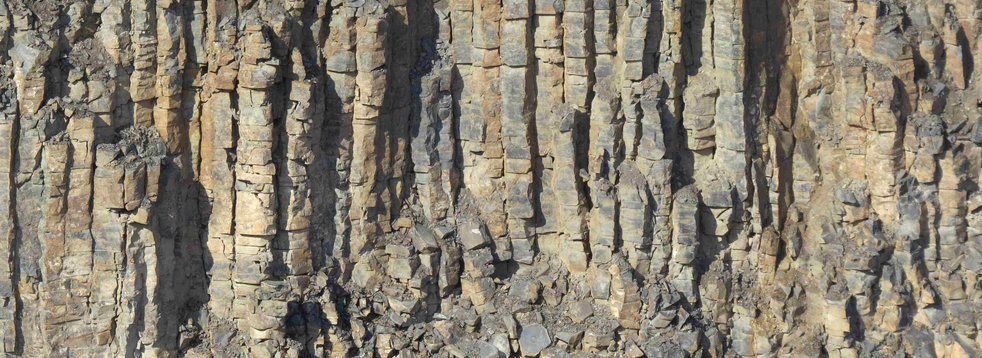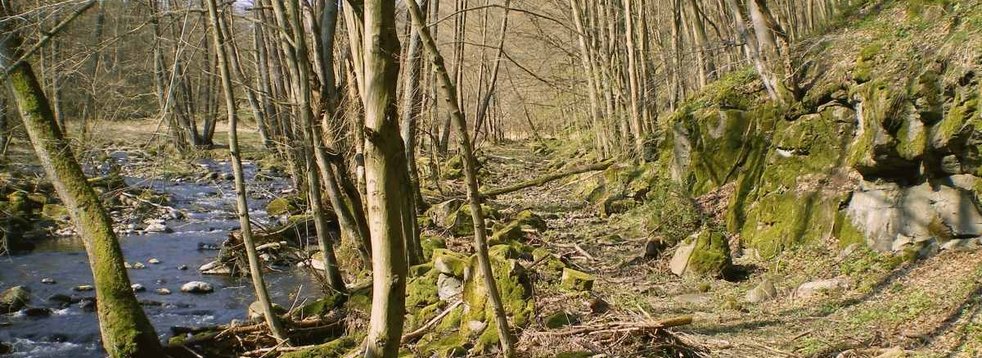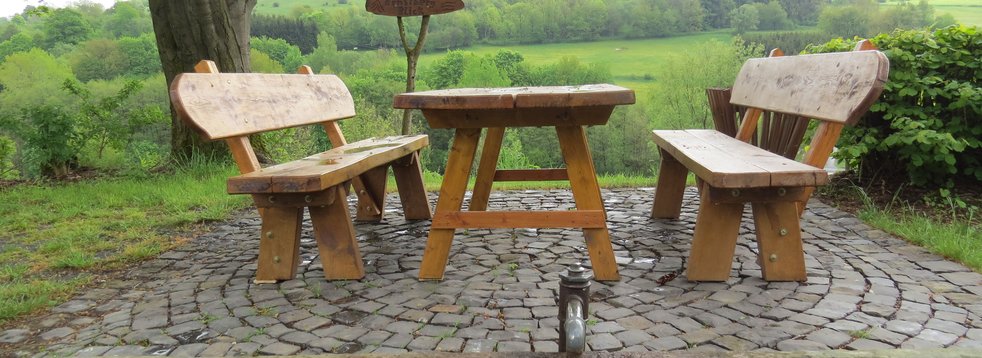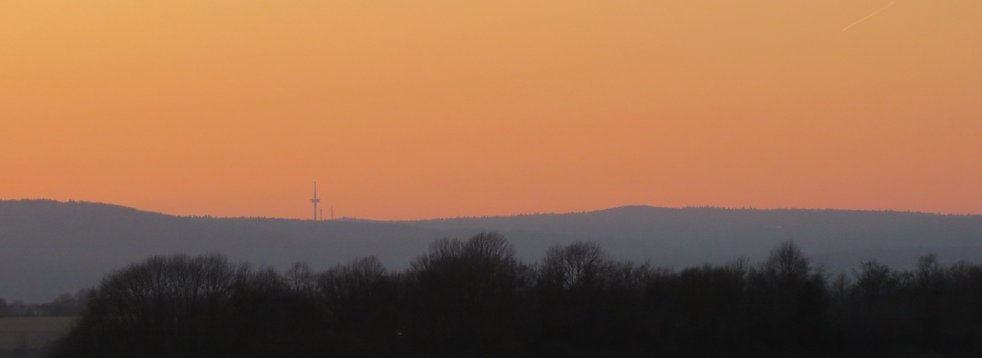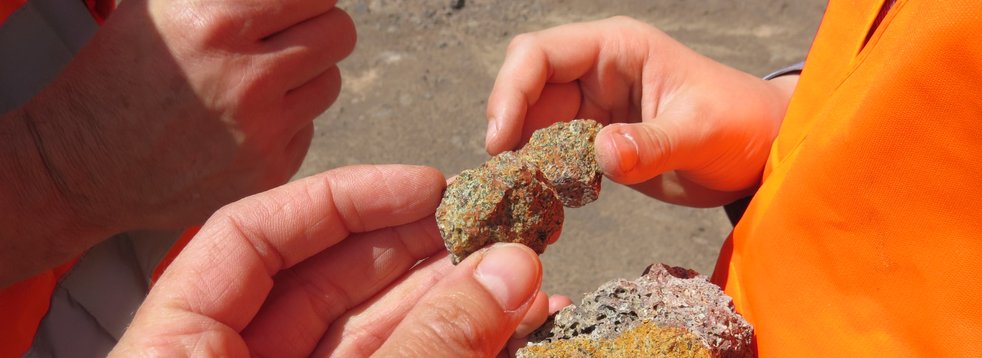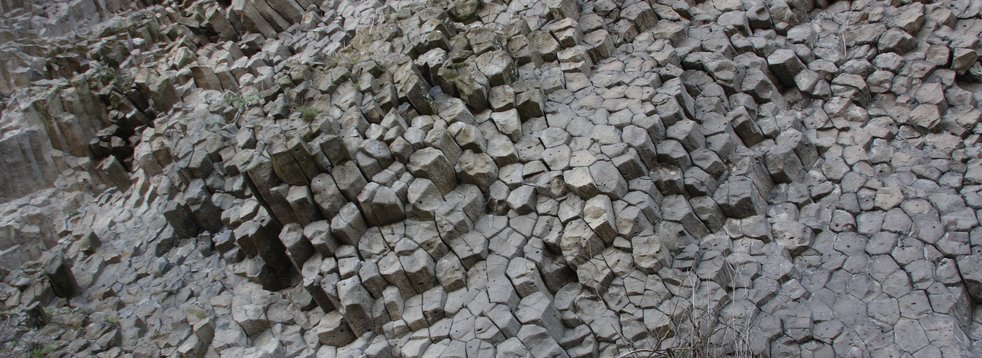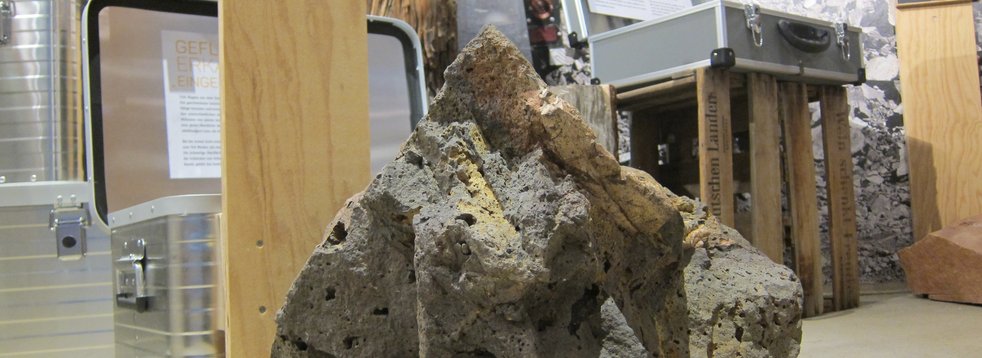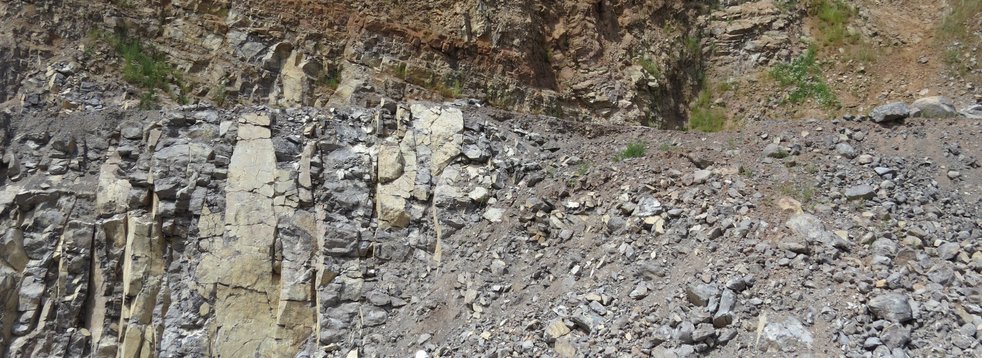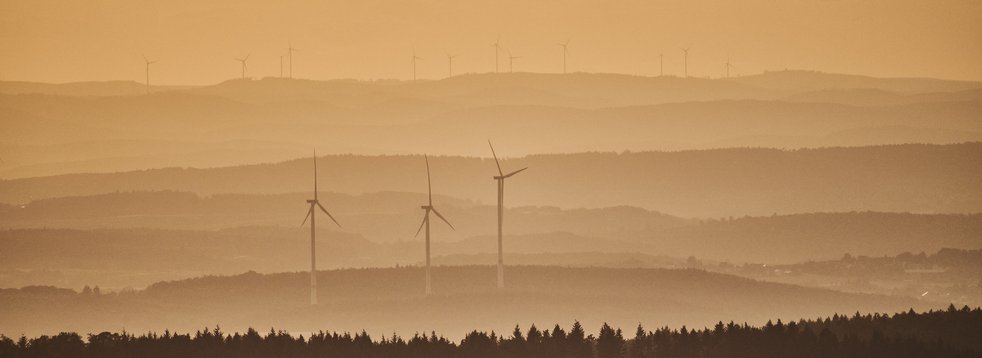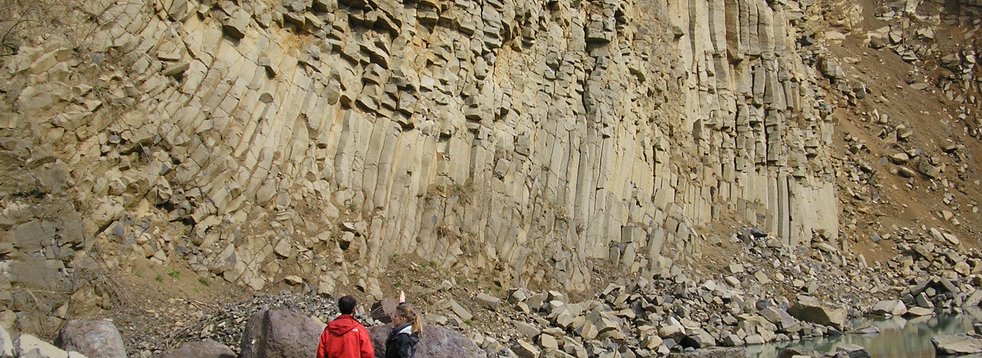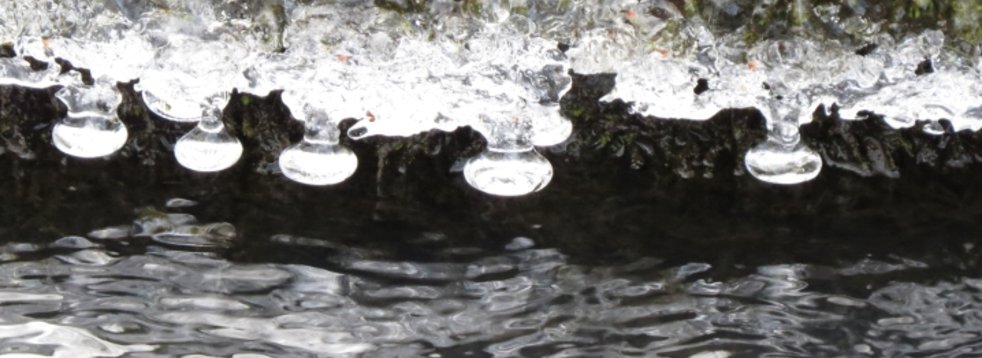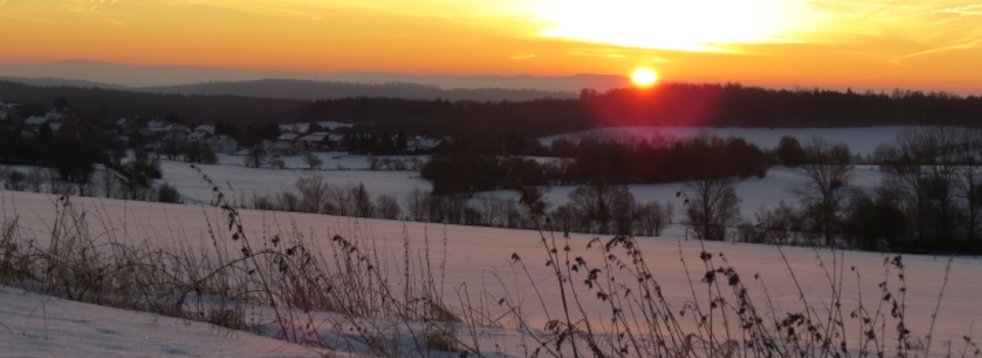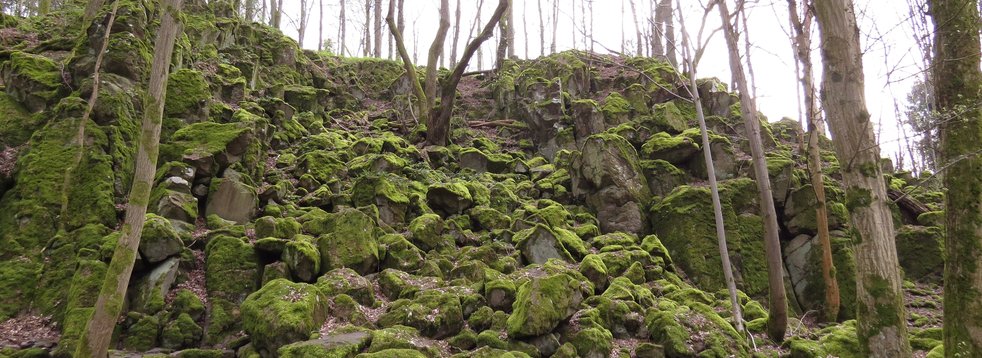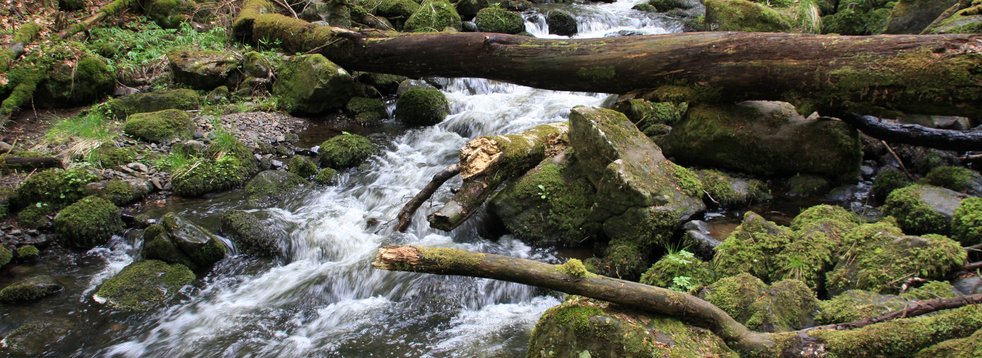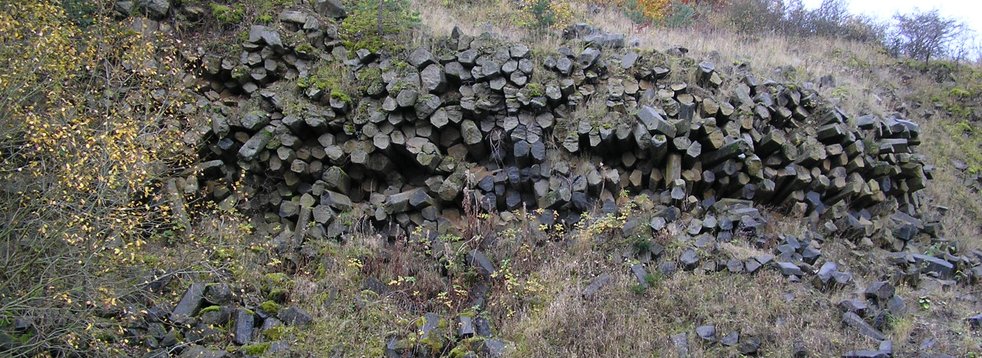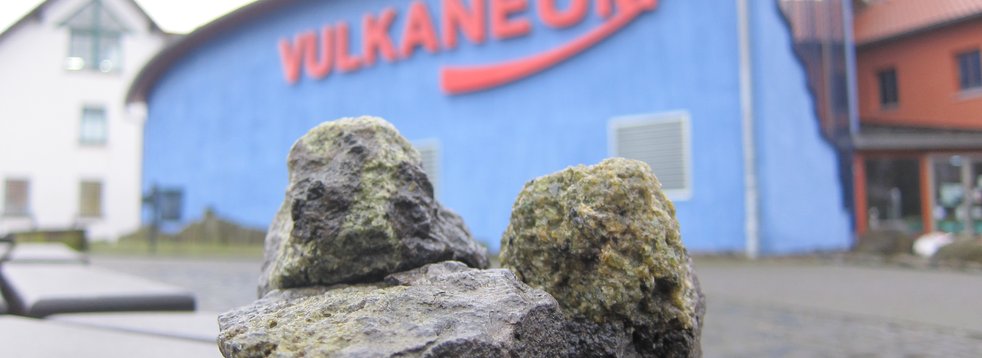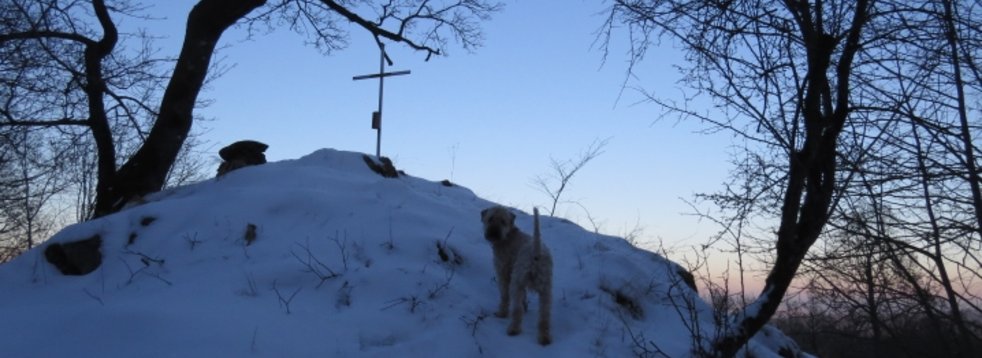Geotope Alte Burg (Old castle) at Kaulstoss
The geotope and natural monument Alte Burg (Old castle) Schotten-Kaulstoss represents something special - in a way a mystery. Is it part of a former lava flow? Or something else?
Geologically they are basalts poor in silicic acid (SiO2), which is why they are called basanite. This composition essentially corresponds to that of the upper mantle. It can therefore be concluded that the magma originates more or less directly from this area, i.e. it has not been chemically modified in the earth's crust. Therefore, these vulcanites probably originate from the later phase of volcanism in the Vogelsberg.
The structures observed in the rock initially indicate a lava flow which was eroded in the area of the edge by the force of weathering. An otherwise typical formation of columns is not or only very unclearly recognizable.
Pyroclastic fall deposits (tephra) - solidified ashes and agglomerates - are found in the immediate vicinity. This indicates that a volcanic vent (e.g. a cinder cone) may have been close by. Where it was located and whether it was related to the basaltic rocks of the geotope is the subject of further investigations and analyses.
Literature
- Ehrenberg, K.-H. & Hickethier, H. (1985). Die Basaltbasis im Vogelsberg. Schollenbau und Hinweise zur Entwicklung der vulkanischen Abfolge. Geol. Jb. Hessen (113), 97–135.
Reischmann, T. & Schraft, A. (2009). Der Vogelsberg: Geotope im größten Vulkangebiet Mitteleuropas. Hessisches Landesamt für Naturschutz, Umwelt und Geologie. Wiesbaden.



